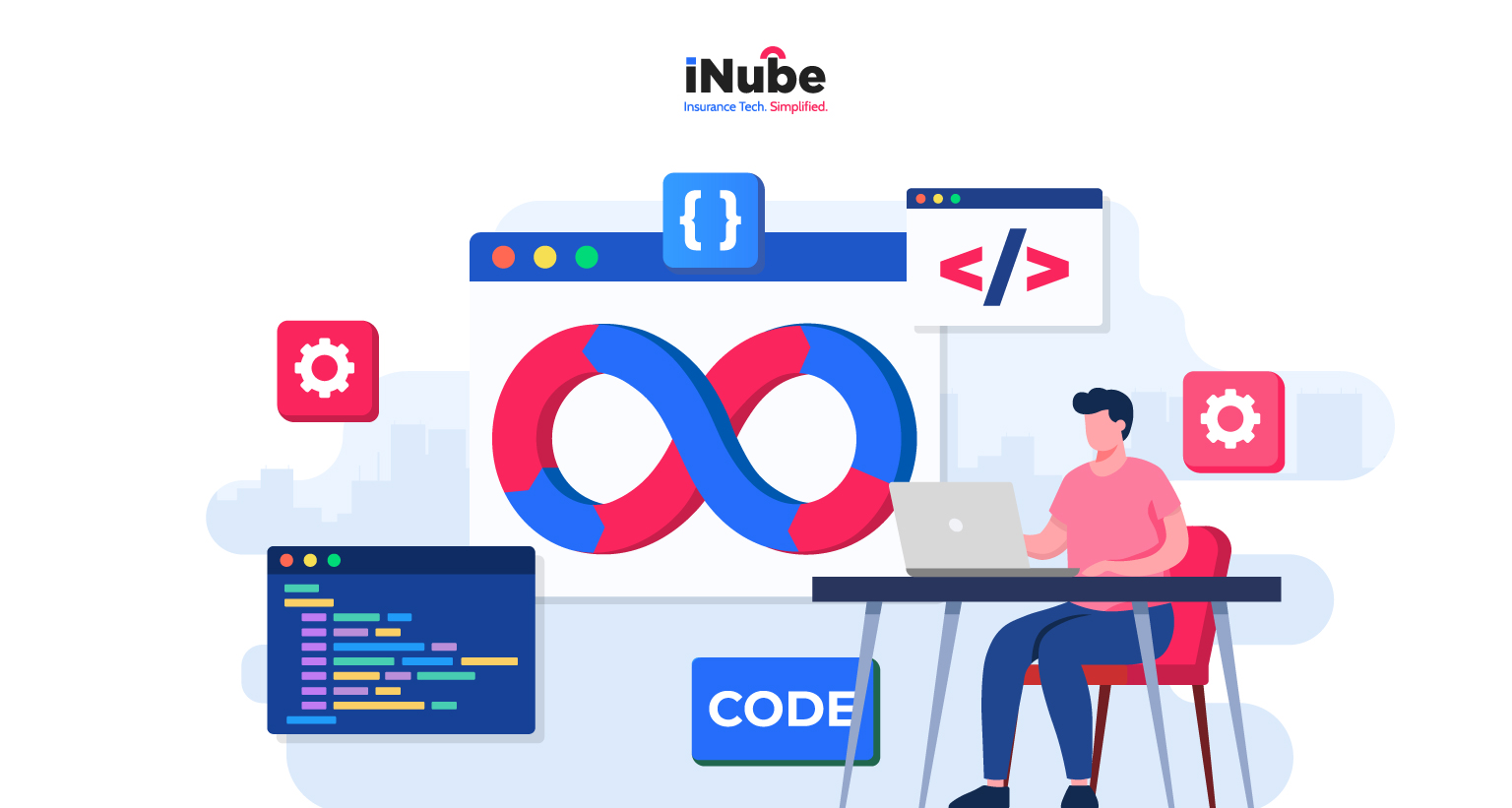Insurance agents’ operational processes are quite tedious and heavy on labor. If you are an insurance agent who is constantly battling with slow processes, mounting paperwork, and outdated systems, then you need to know about Low Code No Code platforms. In today’s fast-paced world, customer expectations are soaring at a rapid pace, which calls for better ways to sell insurance policies as the traditional ways to sell policies take a back seat. Today, the insurance agents are under tremendous pressure to deliver instant quotes, seamless onboarding, and personalized services- all this while managing an ever-increasing workload.
What if there was a simpler way to enhance agent operations that existed? That’s where a low-code no no-code platform can precisely take the center stage.
Low Code No Code Platforms: Understanding the Relevance for the Insurance Agents
Low-code platforms are one of the best solutions for insurance companies that have the opportunity to accelerate their business growth. In particular, low-code no-code platforms can be used significantly for managing claims, underwriting, and custom-built agent portals more efficiently. These LCNC platforms are significantly helping insurance businesses to adapt to the evolving dynamics of the insurance industry.
At their core, low-code platforms are a visual approach to software development. Instead of writing lines of complex codes, users increasingly build applications by simply dragging and dropping pre-built components, connecting workflows, and configuring logic visually. You can think of it like building LEGO buildings, which you can stack up to create something unique and functional.
Why These Platforms are A Game-Changer for Insurance Agents?
In a traditional set-up, any new software or system modification requires extensive IT involvement that results in longer wait times and costly projects. Low code no code platforms significantly democratizes development which allows business users along with the non-technical agents, to actively participate in creating as well as customizing the tools that they need. This plays a pivotal role in bridging the gap between the business requirements and IT capabilities. Significantly calling for faster innovation and greater agility in the insurance sector. It is all about empowering the insurance agents to be a part of the solution, and not just wait for it.
What are the Top 3 Reasons for Agents to Adopt Low-Code No-Code Platforms?
The shift to low-code no-code platforms among insurance agents is not an evolving trend in insurance but a necessity as the insurance sector deals with multiple complexities. Here is a list of tangible benefits that directly make a bottom-line impact:

Improved Customer Experience (UX)
Today’s digitally savvy customers are increasingly expecting speed and convenience. A low-code no-code platform significantly allows insurance agents to build personalized customer journeys, which offer real-time updates, and even create a simpler customer service portal. Accelerated responses to queries, streamlined applications, and proactive communication all play an important role in contributing to superior customer experience in insurance.
Faster Policy Issuance and Quoting
Envision generating as well as binding policies in under a minute and not spending hours doing this task. One of the benefits of low-code platforms is that they have intuitive drag-and-drop interfaces, which enable insurance agents to quickly create dynamic forms, capture customers efficiently, and automate the entire quoting process. This essentially reduces the turnaround times, which leads to closed deals and satisfied customers.
Increased Productivity and Efficiency
Repetitive tasks such as data entry, routine follow-ups, and document generation take up a huge amount of time in an insurance agent’s day-to-day operations. Low-code insurance platforms allow automation of these mundane processes, freeing up the insurance agents to focus on what is best, and selling and building relationships. This essentially translates to improved insurance sales efficiency and overall insurance agent productivity.
How do you know which Low Code No Code Platform is the Best?
70% of new applications in the insurance industry will be built using some amount of low-code no code, or no-code technology.
Here are the key features that make for the right low-code platform for insurance agents:
Pre-built Insurance Templates/Components
It’s important to resort to low-code no-code platforms that understand the nuances of the insurance industry and offer ready-made modules for common insurance processes.
Intuitive Interface
Another important feature to consider when zeroing in on a low-code no-code platform is the presence of an intuitive interface. The easier it is to use; the sooner you will see the benefits.
Robust Integration Capabilities
It’s important to ensure that the platform can seamlessly connect with your tech stacks, which include CRMs, ARMs, and more.
User-Friendly Analytics and Reporting
A low-code platform must allow you to gain more insights into your operations and sales performance.
The Future is Low Code Platforms for Insurance Agents
Digital transformation for insurance agents is here to stay, and with Low Code No Code platforms, it will be further intensified. As the capabilities continue to evolve and customer expectations for speed and personalization increase, low-code no no-code platforms will become even more indispensable. With every future capability discovered, insurers can expect to see the integration of AI and machine learning features within low-code platforms, which enables hyper-personalized experiences and even more sophisticated automation.


